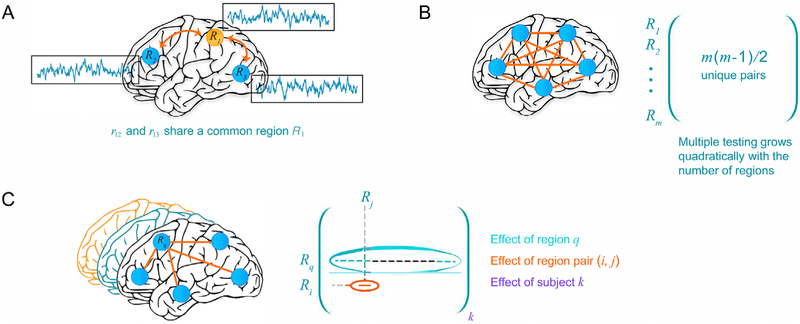Fig. 10.
Characterizing the inter-region correlation structure of group brain data. A) Correlations between two pairs of brain regions, rij, are not independent when they share a common region. Thus, when simultaneously estimating multiple correlations, such relatedness needs to be modeled and accounted for. B) Making inferences about correlations leads to a multiplicity problem, in particular how to account for the simultaneous inferences of all effects under NHST. In a Bayesian framework, multiplicity relates to the problem of modeling all correlations simultaneously by invoking information sharing or partial pooling. C) Within a Bayesian multilevel framework, it is possible to frame the problem in terms of capturing the population-level effect of (1) brain region, Rq, (2) region pair, rij, and (3) subject k. The characterization of the effects at the region level is a unique contribution of our framework, which allows investigators to reveal a region’s “importance” within a principled statistical framework. Reprinted from Chen et al. (2019b).

